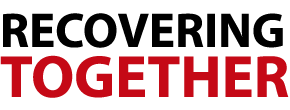In the aftermath of a disaster, needs frequently exceed capacity, leadership is in high demand, and people must confront the reality that no one organization can do everything on their own. A more collective, community-based approach is needed – one that includes robust partnerships between community groups.

Staff from the Tehama County distribute “grab-and-go” meals during COVID-19, as part of a partnership with First 5 Tehama County and the Red Bluff Union Elementary School District.
As one of the most trusted organizations within a community, libraries have a unique role to play in helping to coordinate recovery efforts and connect partners after a disaster. While the library does not need to be at the center of recovery efforts, staff and volunteers can lead by linking community groups, coordinating with local leaders and connecting patrons with much needed resources.
During recent disasters, libraries have assigned staff to support other county departments, as well as local nonprofits. Libraries have also used their facilities and programs to help connect vulnerable residents with much-needed services, such as food and housing assistance.
In Redding, the Shasta Public Libraries have developed a unique partnership with the county’s Health and Human Services Department, which brings social workers into the library once a week. Following the Carr Fire in August 2018, the library also coordinated with Cal Hope Shasta, a local social services organization, to help connect patrons with recovery resources.
After the Delta Fire struck a more remote part of Shasta County a month later, in September 2018, a couple came into the library looking for help.
“They were just in tears, saying ‘We cannot get anyone to listen to us. We’re going to have no place to go. We’re going to be homeless on the street,’” said interim library director Elizabeth Kelley. “They felt like there was no support.”
Because of community partnerships and existing relationships, the library was much more prepared to offer assistance, said Kelley. A few phone calls later, they were able to connect the couple with local service providers.
Leverage existing connections
As the library enters the recovery phase, encourage staff members and volunteers to reflect on their own community connections, asking “What role can the library play? How can the library be of assistance?”
If a disaster assistance group is created to help manage recovery effort, encourage staff members to participate and report back.
SIDEBAR: While partners will vary, based on location, NLS libraries have worked with a diverse range of groups during the recovery phase, including:
- Community centers
- Community foundations
- County offices of education
- County offices of health
- Fire departments, Cal Fire, FEMA
- First Five
- Food banks
- Homeless assistance programs
- Red Cross (local and regional)
- The United Way
- Unions
When working with community partners, libraries can:
- Align library recovery efforts with city and county staff, local nonprofits and community organizations; invite representatives from these groups to set up a table in the library
- Work with local groups to co-promote recovery resources and activities
- Promote actions that community members can take to support recovery, such as volunteering, fundraising/donating money, or assisting with community education efforts
Tools & Resources
- Recovering Together community partner conversation guide
